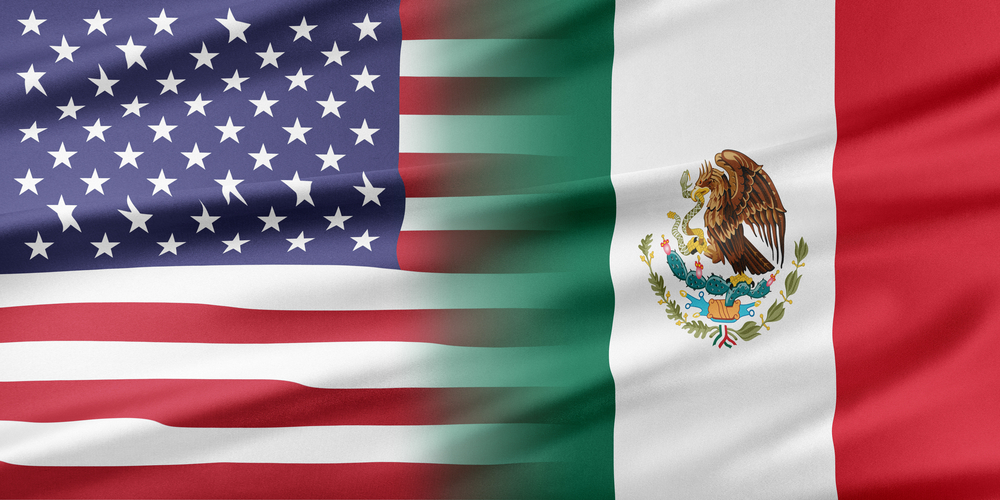Jobs seem to be to focal point of any economic discussion these days, especially since the market crash of 2008. This remains true when it comes to those related to international trade agreements like NAFTA, the North American Free Trade Agreement.
The NAFTA-20 conference was recently held in San Antonio, Texas, where NAFTA was signed in 1992. It was held by the North American Development Bank and the Asociación de Empresarios Mexicanos, and attended by more than five hundred business , government, and logistics leaders from across the continent. The speakers and business leaders that attended discussed creating a path designed to deepen the integration of Mexico, Canada, and the U.S. through political support and the defense of NAFTA leaders of all each of the three signatory governments to the agreement.
Data shows that Canada, Mexico, and the United Starts are, to a great degree, much more economically integrated today, 20 years after the signing of NAFTA. The agreement has largely fulfilled its trade-growth purpose. The U.S., Canada and Mexico’s leading economic indicators have increasingly tracked similar patterns since NAFTA was implemented. Each country now depends on the other to a greater extent than before the existence of the trade pact.
Robert Pastor, the intellectual founder of the concept of the North American Union (NAU) and former U.S. security advisor, sees a dreary future for the NAFTA in its present form. He cites available data to make his point. He believes that annual growth in NAFTA trade, which started in 1994, actually peaked in 2001 with a 19% growth that year, but momentum has declined since then, partly because of new security regulations that followed the 9/11 attacks. Pastor encouraged NAFTA supporters to expand the NAFTA, and move on to the creation of a North American Community with trans-national thinking. Pastor’s encouragement of North American integration has been the subject of intense controversy. While Pastor has contested any advocacy of a North American Union (NAU), he does suggest a North American Community. Pastor laid out a vision that’ s identical to NAU.
Pastor’s Projected North American Framework:
1) Creating a common security perimeter
2) Promoting a single ‘common’ or seamless’ market
3) Reducing the development gap between Mexico and its North American counterparts
4) Building intercontinental infrastructure
5) Enhancing labor mobility between the three countries
6) Forming a tribunal to adjudicate investment disputes
For many, this represents a threat to U.S., Canadian and Mexican national sovereignty. Words like “regionalization” and “cross border” are often used to describe the relationship that currently exists between the NAFTA countries. If a project to create a North American Union (NAU) was undertaken and successful, national priorities would take a back seat to regional priorities, and resources and wealth would quite possibly be taken from one nation to redistribute to another.
Some postulate that this would result in employment and investment gains for Mexico and Canada, while others believe that the effects on wages and job creation in the U.S. may be adversely affected.
As an example of how the economies of three countries have become highly integrated, Luis de la Calle, managing director of De la Calle, Madrazo y Mancera S.C., pointed out that an automobile can’t be manufactured in the United States without parts that are manufactured in Mexico.
Meanwhile, the tariff reductions and supply chain integrations that occurred under NAFTA will continue to benefit some of North America, especially as wages rise and policies change in China, making production in that country increasingly more expensive. The U.S, Mexico and Canada, working together as economic partners are not only competitive with China, but also hold substantial competitive advantages over China, most noteworthy being the proximity on of the world’s largest markets for consumer goods. Importing goods from Mexico into the U.S. and Canada is far less expensive than it is to transport them North American markets than from far away China. Also, China’s population is aging at a much quicker rate than Mexico’s, due to its one-child policy. Mexico’s workforce will continue to be plentiful, while the Chinese workforce will decline in number, and, as a result, increase in cost.
While it’s clear that the intention of NAFTA proponents is to push ahead with deeper North American integration, beyond the single realm of trade, Pastor, along with Canada’s John Weekes and Mexico’s Ambassador Arturo Sarukhan, advocated that NAFTA nations join the Trans Pacific Partnership (TPP) and use it as a way to renegotiate NAFTA. The TPP can provide an opportunity to update NAFTA. The TPP is expected to broaden trade rules to include areas that did not exist twenty years ago, such as issues involving digital technologies, for instance.
Pastor also encouraged the Canadian and Mexican governments to bring their ideas for a more integrated North American “community” via the TPP, to the U.S. and that the Obama Administration would be opening to listening to them. Some see this as a good thing, while many in each of the three countries involved see movement in this direction as a possible threat to individual nations’ sovereignty.
Subscribe
Sign up and stay informed with tips, updates, and best practices for manufacturing in Mexico.





